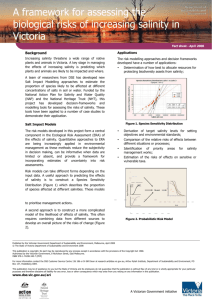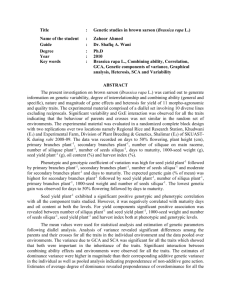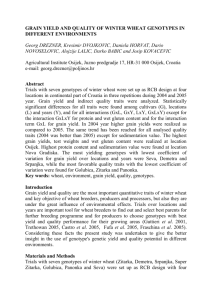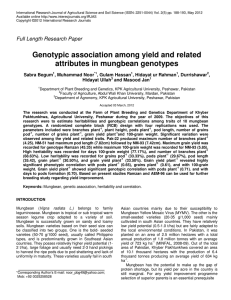plant locus
advertisement
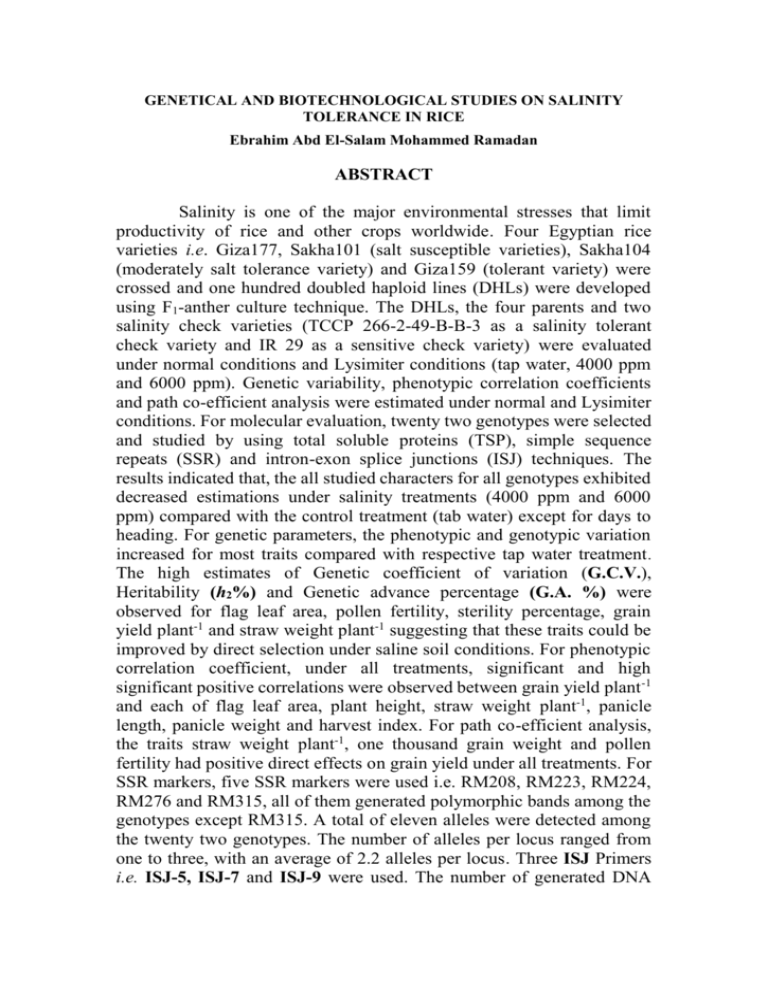
GENETICAL AND BIOTECHNOLOGICAL STUDIES ON SALINITY TOLERANCE IN RICE Ebrahim Abd El-Salam Mohammed Ramadan ABSTRACT Salinity is one of the major environmental stresses that limit productivity of rice and other crops worldwide. Four Egyptian rice varieties i.e. Giza177, Sakha101 (salt susceptible varieties), Sakha104 (moderately salt tolerance variety) and Giza159 (tolerant variety) were crossed and one hundred doubled haploid lines (DHLs) were developed using F1-anther culture technique. The DHLs, the four parents and two salinity check varieties (TCCP 266-2-49-B-B-3 as a salinity tolerant check variety and IR 29 as a sensitive check variety) were evaluated under normal conditions and Lysimiter conditions (tap water, 4000 ppm and 6000 ppm). Genetic variability, phenotypic correlation coefficients and path co-efficient analysis were estimated under normal and Lysimiter conditions. For molecular evaluation, twenty two genotypes were selected and studied by using total soluble proteins (TSP), simple sequence repeats (SSR) and intron-exon splice junctions (ISJ) techniques. The results indicated that, the all studied characters for all genotypes exhibited decreased estimations under salinity treatments (4000 ppm and 6000 ppm) compared with the control treatment (tab water) except for days to heading. For genetic parameters, the phenotypic and genotypic variation increased for most traits compared with respective tap water treatment . The high estimates of Genetic coefficient of variation (G.C.V.), Heritability (h2%) and Genetic advance percentage (G.A. %) were observed for flag leaf area, pollen fertility, sterility percentage, grain yield plant-1 and straw weight plant-1 suggesting that these traits could be improved by direct selection under saline soil conditions. For phenotypic correlation coefficient, under all treatments, significant and high significant positive correlations were observed between grain yield plant -1 and each of flag leaf area, plant height, straw weight plant-1, panicle length, panicle weight and harvest index. For path co-efficient analysis, the traits straw weight plant-1, one thousand grain weight and pollen fertility had positive direct effects on grain yield under all treatments. For SSR markers, five SSR markers were used i.e. RM208, RM223, RM224, RM276 and RM315, all of them generated polymorphic bands among the genotypes except RM315. A total of eleven alleles were detected among the twenty two genotypes. The number of alleles per locus ranged from one to three, with an average of 2.2 alleles per locus. Three ISJ Primers i.e. ISJ-5, ISJ-7 and ISJ-9 were used. The number of generated DNA fragments was ranged between six for ISJ-7 and seventeen fragments for ISJ-5 producing polymorphic ratio of 82.05% in average.






